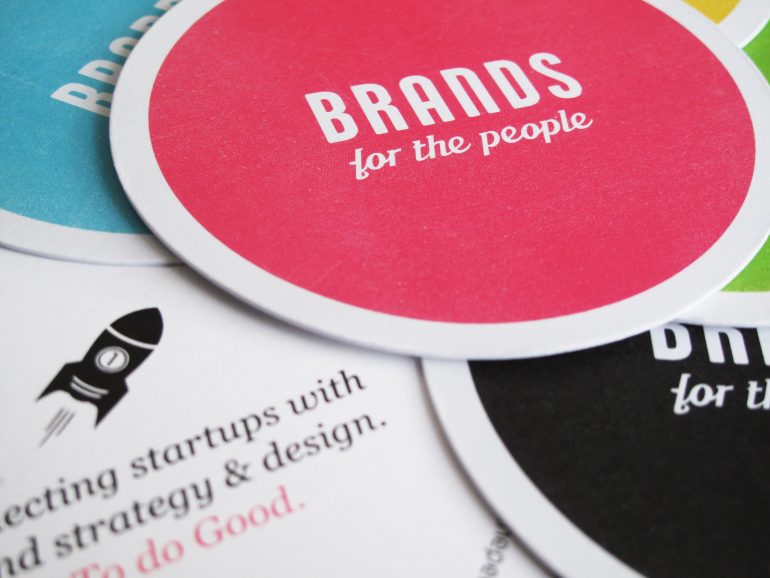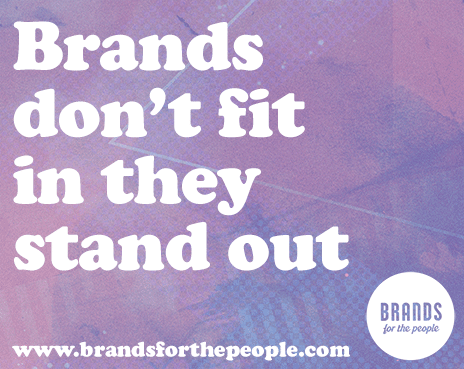A logo is not a brand: a great brand is really a great story.
Too many startups confuse the two. Often the confusion turns into a costly mistake. Sourcing a logo and choosing an unspellable and unpronounceable company can be cheap, while having to completely rebrand after the fact is expensive.
By aligning the right name, the right logo, and communicating a brand story, Brands for the People is helping startups to cost effectively go through this process. It’s about doing it right from the start.
Founder Andrea Shillington is taking her experience of leading a wide variety of projects including the rebranding of the United Arab Emirates’ federal government, to rebranding hospitality groups, commodities corporations and real estate developers, and making it an accessible online platform. It all starts with matching the business up with the right talent, from a hand-picked community of designers from all over the world including New York, London, Perth and more.
From the process of eating her own dogfood, and branding her own startup, Shillington shares that, “I had a good thirty names for the business. You have to download as many ideas about your business as you can. Five names definitely isn’t a big enough list. It’s a process of really digging deep, and connecting a purpose with meaning. Often you need to step away, and come back with fresh eyes and thoughts 24 or even 48 hours later. The name ended up being in my notes, and not even on the list of names. In my case it more than just the name, it’s our company promise. It’s about accessible and affordable branding.”
She offers a unique case study to consider when talking about how companies haven’t given a lot of thought about the initial naming process. It’s best to avoid either going too narrow or the opposite end of the spectrum by being too broad. “One example I look to is the branding of the drink Soylent (a food replacement drink), which kind of looks like baby vomit,” said Shillington. “The brand’s name is inspired from an 1973 sci-fi movie about the future. Soylent Industries in the movie is the sole food provider and the secret ingredient is human flesh. Basically these guys hit it huge and many of their PR mentions reference this movie, which is damaging to their brand in my opinion.”
Further to this story, shaking her head and saying “it’s an amazing idea that’s taken off big time, without any intentional branding. They blew away a $100,000 goal by raising over $1 million dollars on Kickstarter. I can’t help but wonder how much better off they would be if they had taken a few extra days or hours to think through their brand early on. When you’ve got the blank slate in the beginning it’s worth taking a few extra hours to be more intentional in thinking through the process of connecting your business name to the business story. Despite Soylent’s early success, I really wonder if it’s the right name.”
Shillington said “it’s so important to think about the digital implications of naming your business. For instance, if your name is too descriptive, you’ve got to think about how you’ll compete on Google and other search engines.” A poor name hampers discoverability. Is your name just more noise? She adds, “you need to think about this from your customers perspective, how easy is it for them to find you? Can they remember the name, can they spell it close enough for a search engine to get them there?”
Branding is a key differentiator. It’s an important investment. Differentiation through design often separates success from failure. She thinks that “people’s BS meters are at an all time high. There’s lot’s of easy options for startups, but when you’re using the same off-the-shelf buttons, templates, and stock designs you’re communicating a visual sameness that’s seemingly showing up all over the web. It’s easy to look amateur. Looking professional takes time, effort, and thought . It’s about designing authenticity.”
For so many startups the business focuses on what it is, the tech, the code and the cool features. It’s imminently worth seeing your startup as a brand, and how your story answers the important why’s that your customers will ask.
As Shillington says, “a brand needs to extend the business strategy, it’s not just icing on the cake. The moment your business launches the world perceived your brand, regardless if you’ve thought about it or not. Given the failure rate of startups, it’s worth your time.”



